Our skin can completely describe the state of the body as a whole. Acne may be the first symptom of some diseases. Its location also indicates health status. Therefore, when we encounter chest acne, we must ask ourselves: what does it mean, what causes chest acne and what do we do in such a situation? The most important issue we will focus on is the causes of acne on the chest.
Causes of acne on chest
The chest and neck area are very intimate places. Without a doubt, everyone agrees that acne on the chest looks very unsightly. And it's not our fault, because they can pop up anywhere on our skin where there are pores that produce sebum. And if the sebaceous glands become clogged, acne can appear on any part of the body. So what causes chest acne?
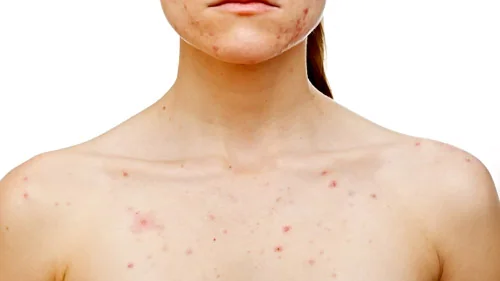
It is important to understand that pimples sometimes appear on our chest and back, face or somewhere else. This is a normal process. Such single pimples can appear for no particular reason. It could be a clogged channel. This may be related to hormones. In case pimples appear on a regular basis, you are definitely facing a real problem. In order to find the right treatment, you must know the causes.
- Often clogged sweat glands are the cause of acne. A large number of small white pimples may appear on the skin as a result of this problem.
- Pimples can also appear as some kind of allergic reaction to a cosmetic product.
- What we wear can cause small pimples on our chest. Red pimples may appear on the chest as a result of impaired thermoregulation of the body. This means that you are wearing clothes that fit too tightly. Your body may lack ventilation, especially when clothing is made from synthetic materials and is too tight. Such pimples may also appear under the breasts due to improper thermoregulation.
- Hormonal imbalance is one of the causes of chest acne. Hormonal disorders can change sebum production and local immunity. If hormonal changes are caused by natural causes (for example, during lactation or pregnancy), such rashes will disappear on their own almost completely as soon as the hormonal balance becomes normal.
- What else causes chest acne? Diseases of the reproductive system can lead to this problem. Some girls experience acne before their periods. Later, such rashes go away on their own. This can also be thought of as hormone fluctuations.
- Many researchers believe stress also causes pimples. If they are caused by stress, acne can appear simultaneously on the chest and on the back along the spine.
- Immunodeficiency and forms of uncontrolled diabetes can also lead to acne on the chest.
Rashes of varying severity may be a sign of an allergic reaction (you may be allergic to some drug, cosmetic, or food you consume). - Red rashes can occur as a result of colds.
- Lack of attention to basic personal hygiene is often the cause of chest acne.
How to get rid of acne on chest
You want to wear a swimsuit or a low-cut dress, but you have all the signs of acne. Luckily, you can take a few steps to get rid of it by following these simple tips. Treat breast acne the same way you would treat acne on your face or any other part of your body. If you still have breakouts, you can cover it up.
Treatment
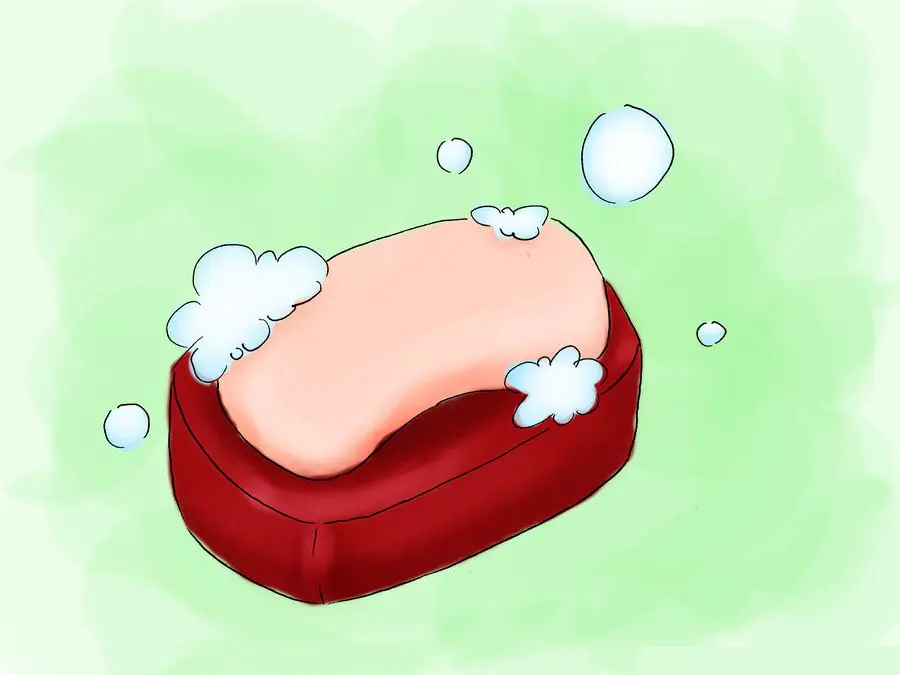
1. Choose a cleanser that fights acne. Use exfoliating gloves and a 2% salicylic acid cleanser in the shower. Make sure to replace your gloves every 3 months as they are a breeding ground for bacteria.
Soaps containing these ingredients serve as secreting agents that will help curb acne.
If you rub your skin too roughly, you will deplete your skin's natural oils and irritate your acne. Always rub your breasts gently to get rid of dead skin cells.
Take a shower every day. If you scrub your skin, sebum and bacteria will collect on the surface, resulting in acne.

2. Use acne cream. The cream should have a salicylic acid concentration of 0.5 to 2 percent. Apply the cream directly to the acne.

3. Use benzoyl peroxide. Benzoyl peroxide fights bacteria that cause acne and also helps dry and exfoliate the dead layers of skin on the epidermis.
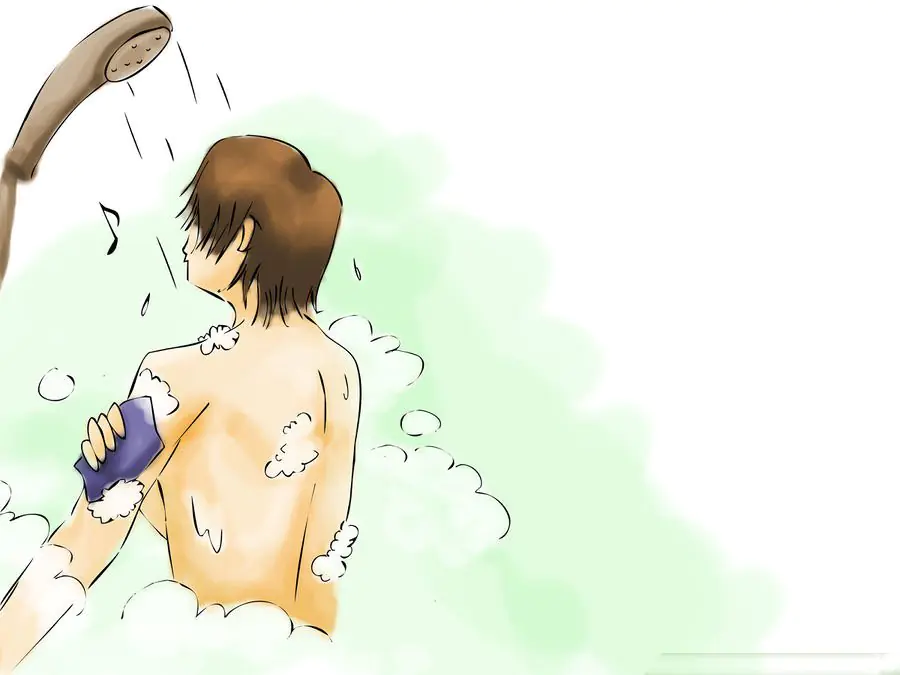
4. Help exfoliate the skin with a sponge. This removes the dead layers of skin on the epidermis, or top layer of skin. Exfoliating can help reduce chest acne.
Breast acne is often the result of clogged hair follicles or pores, which leads to a buildup of sebum. Men tend to be covered in hair, while women tend to wear tighter bras and tops. Both allow acne to form, which makes exfoliation very important.
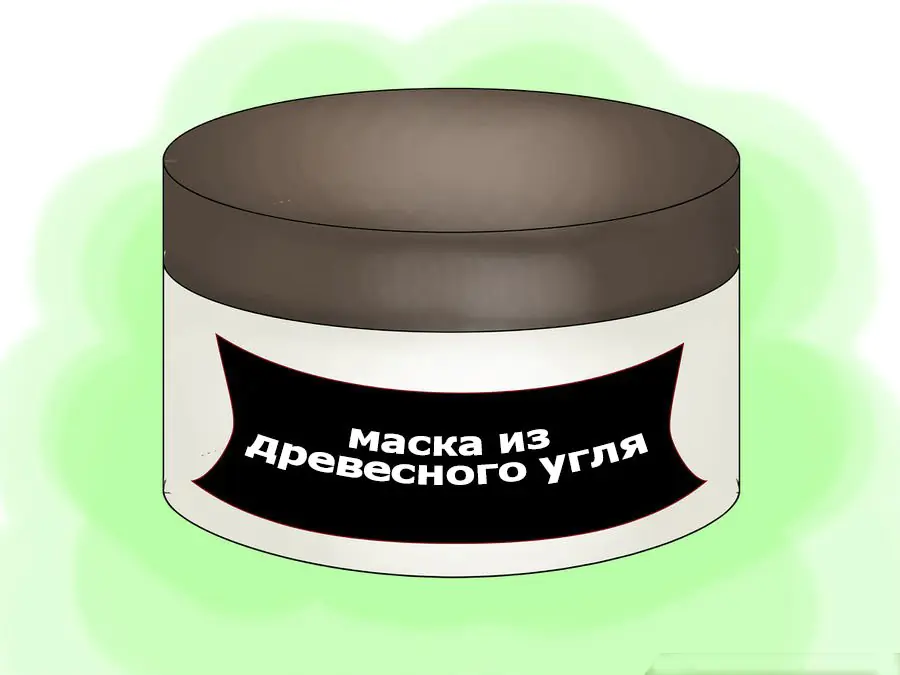
5. Use a face mask. Look for masks made from clay or charcoal, or you can try a mask that contains mandelic acid.
Rub the charcoal mask onto your chest twice a week and then rinse. The mask will cleanse the area and unclog the pores.
Mandelic acid masks are used 10-15 minutes before a shower.
You can also try a clay mask or masks containing tea tree oil. Many people think that tea tree oil is a good remedy for treating various skin conditions.
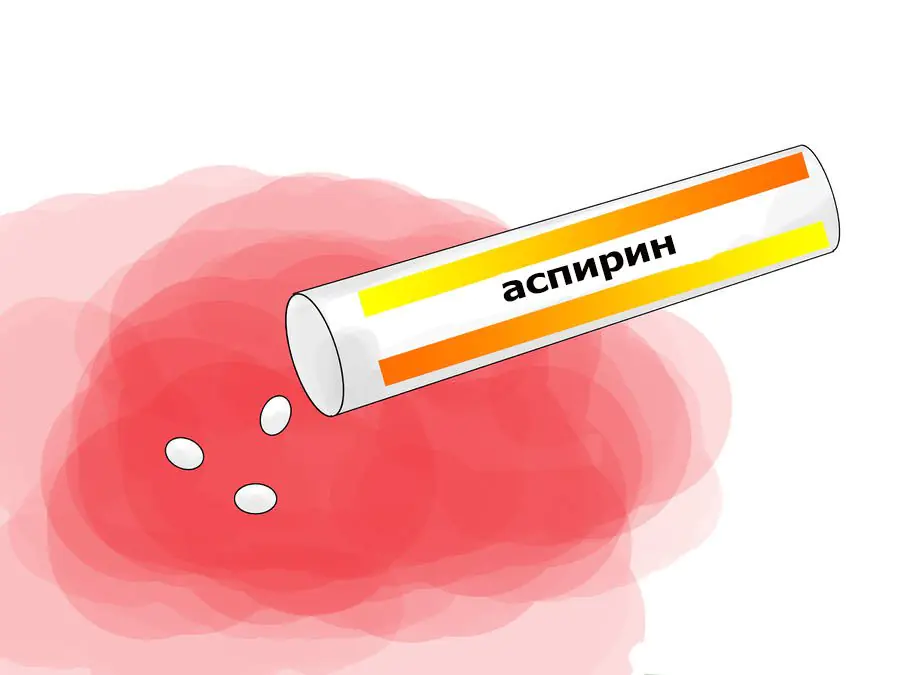
6. Aspirin actually contains salicylic acid, which dries out acne and reduces inflammation caused by acne. It can be used to make an effective paste.
Grind 2 aspirin tablets and mix with one teaspoon of water, adding one teaspoon of honey. Apply to breasts, or where needed, and let dry for 10 minutes. Rinse off with cool water.
Prevention
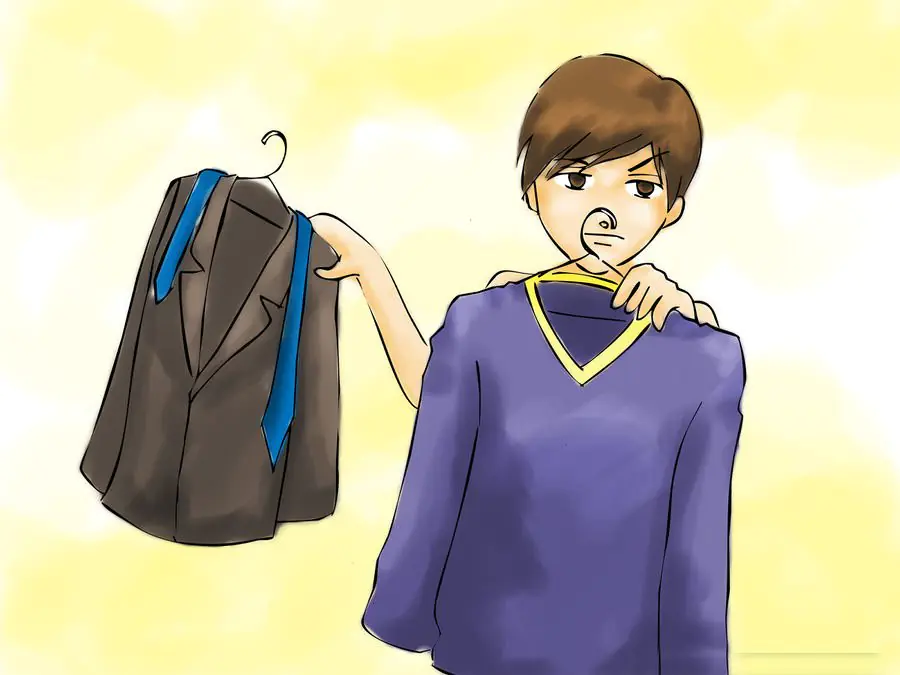
1. Wear cotton or linen tops. Cotton and linen are the most breathable fabrics, and they allow sweat to evaporate instead of pooling on your chest, clogging pores and allowing bacteria to grow.
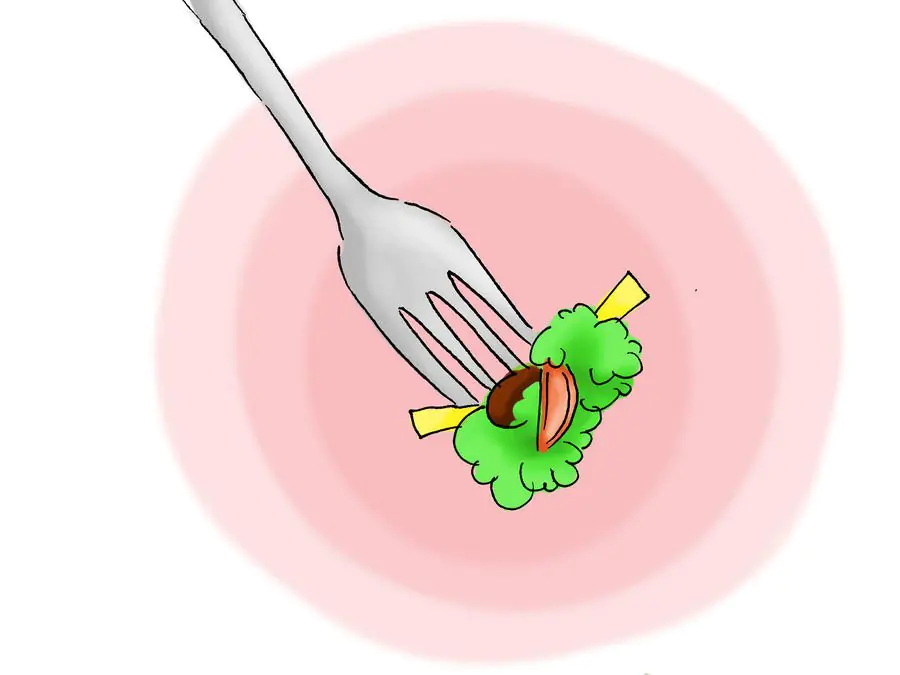
2. Change your diet. Eat a few walnuts every day to reduce skin inflammation. Eat more fruits and vegetables. Add more lean protein, like soy chicken breast, to your diet, as well as whole grains and omega-3 fatty acids.
People who eat more fruits and vegetables, and less milk and sugar, tend to have less acne. Eat 5 to 9 servings of healthy vegetables (especially leafy greens) per day.
Healthy fats like omega-3s help fight inflammation and promote healthy cells. Omega-3s are damaged by oxygen, which means if you eat foods that are rich in omega-3s, try to eat them raw. Omega-3 rich foods include:
- Fish, especially salmon, sardines, mackerel and herring.
- Seeds and nuts, especially flaxseed.
- Leafy greens, especially spinach and arugula.
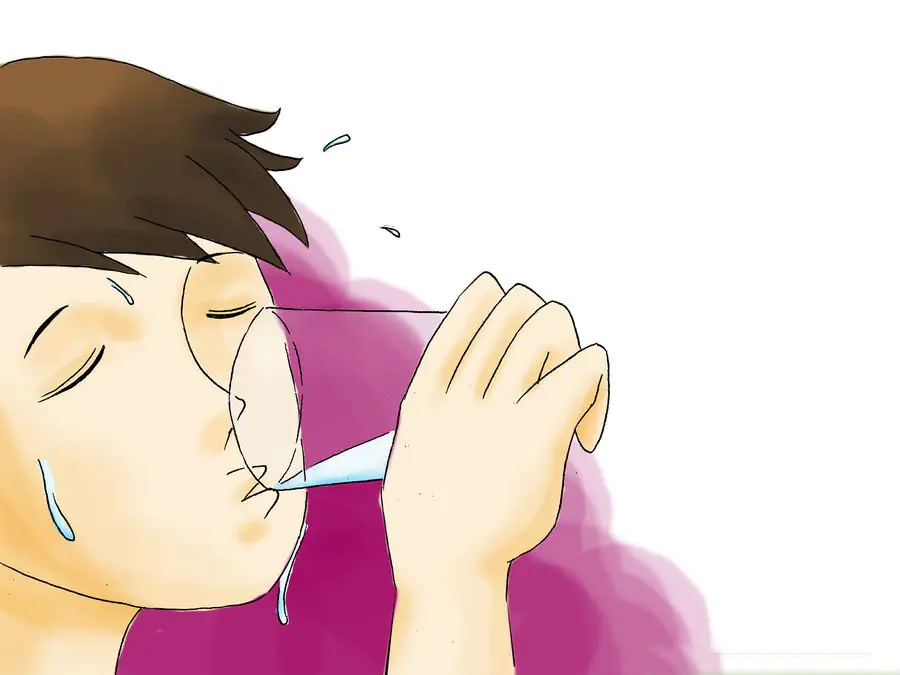
3. Drink plenty of water. Your skin is the largest organ in the body. Like other organs, it needs plenty of water to stay hydrated and function at a healthy level. Many doctors recommend drinking 9 to 12 glasses of water per day (2.2 to 3 liters), depending on whether you are a girl or a guy.
Eliminate sugary drinks, soda, juices and smoothies from your diet. They have a significant effect on acne, sugar acts as a trigger. It causes a spike in insulin, which in turn stimulates the production of acne-causing hormones.
Unsweetened green tea can be much healthier to drink. Green tea contains antioxidants that help fight free radicals; Free radicals affect cells that may be responsible for signs of aging in the skin. As a healthy alternative to water, you can brew delicious and healthy green tea!

4. Skip dairy products. They are hormones from cows that stimulate your pores and your sebaceous glands. If you must drink milk, you can choose skim milk. Hormones are mainly concentrated in the fatty part of milk.
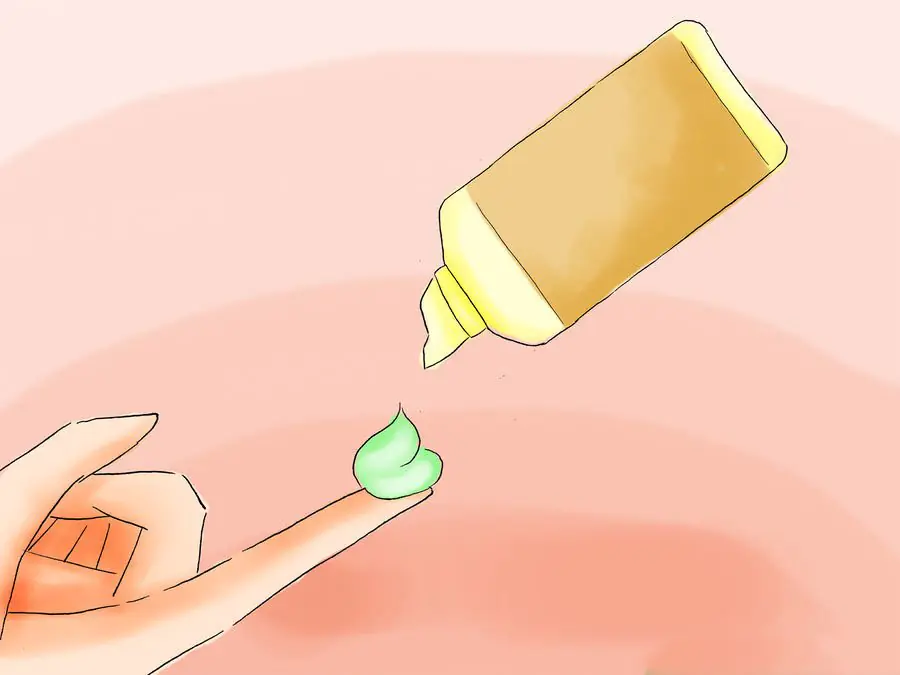
5. Use non-comedogenic body lotions. Look for labels that say "oil-free." Comedogenic ingredients tend to clog pores. These include cocoa butter, pigments and dyes, coal tar and isopropyl myristate. If your skin is oily, you should always look for non-comedogenic lotions and cleansers.
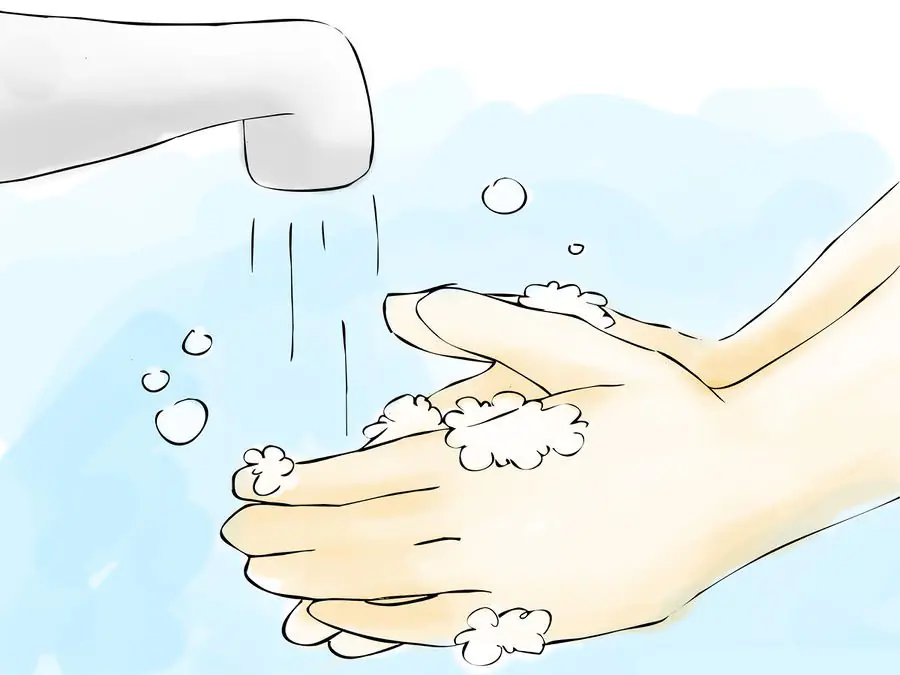
6. Wash your hands after you go to the bathroom. If you have bacteria on your hands and then touch your chest, you are transferring it to a place where it can clog your pores.

7. Try to remove as much unhealthy stress from your life as possible. Doctors aren't entirely sure why, but they do know that there is a link between stress and skin diseases, particularly stress and acne. Somehow, the cells that produce sebum, which is the material that ultimately leads to acne, become dysregulated when a person experiences a lot of stress.
Enough time to rest. Doctors know that the less sleep you get, the more likely you are to feel stressed throughout the day. And the more stressed you are, the more your acne breaks out.
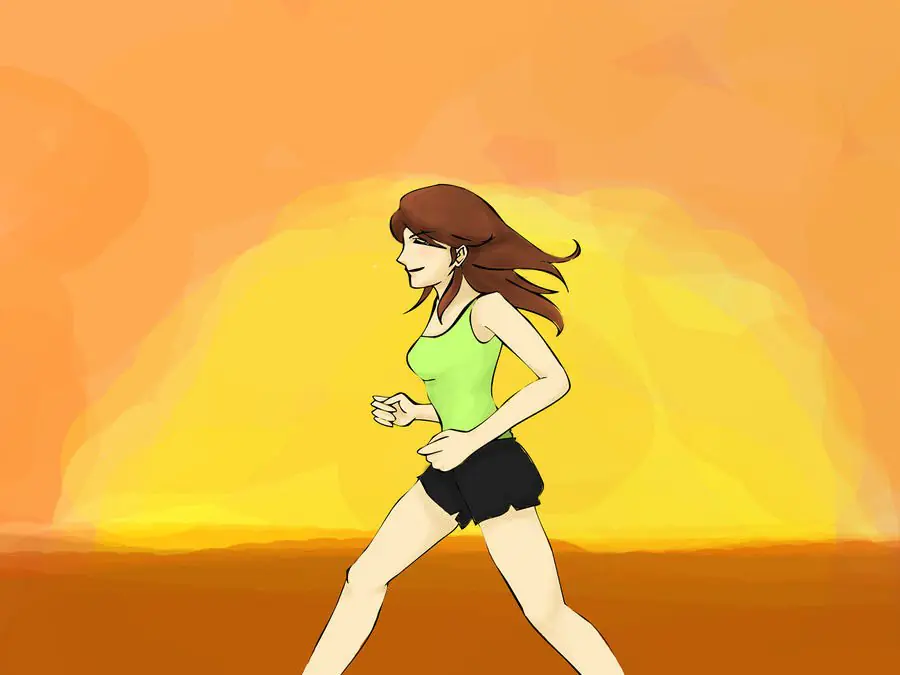
8. Exercises. Gymnastics is an almost universal panacea. In this case, exercise promotes healthy blood circulation and helps relieve anxiety and stress. So you need to find an excuse to run—or walk—join a sports team, or get on an exercise bike.
Shower after you exercise. It is very important. Your pores may become clogged with sweat after you work out. If you shower and cleanse them, there's a good chance you'll avoid developing more blackheads that are caused by simply neglecting hygiene after exercise.
How to cover up acne on your chest
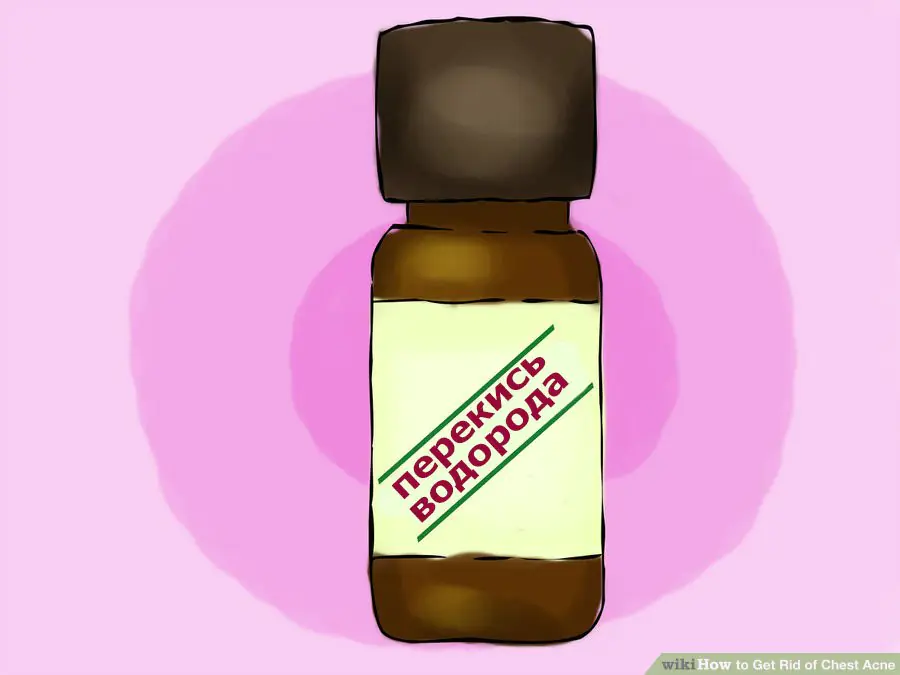
1. Apply a cotton swab soaked in hydrogen peroxide to the acne.
Eye drops can help reduce inflammation and the appearance of redness.

2. Apply foundation that contains salicylic acid. Choose a concealer that is 1 shade darker than your skin tone.
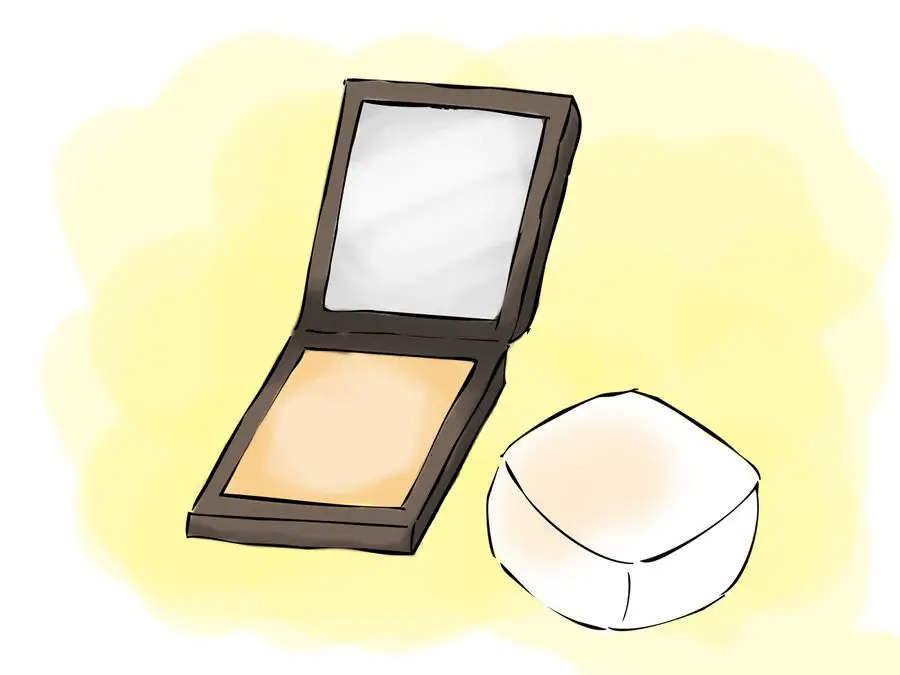
3. Add a layer of foundation that matches your normal skin tone.
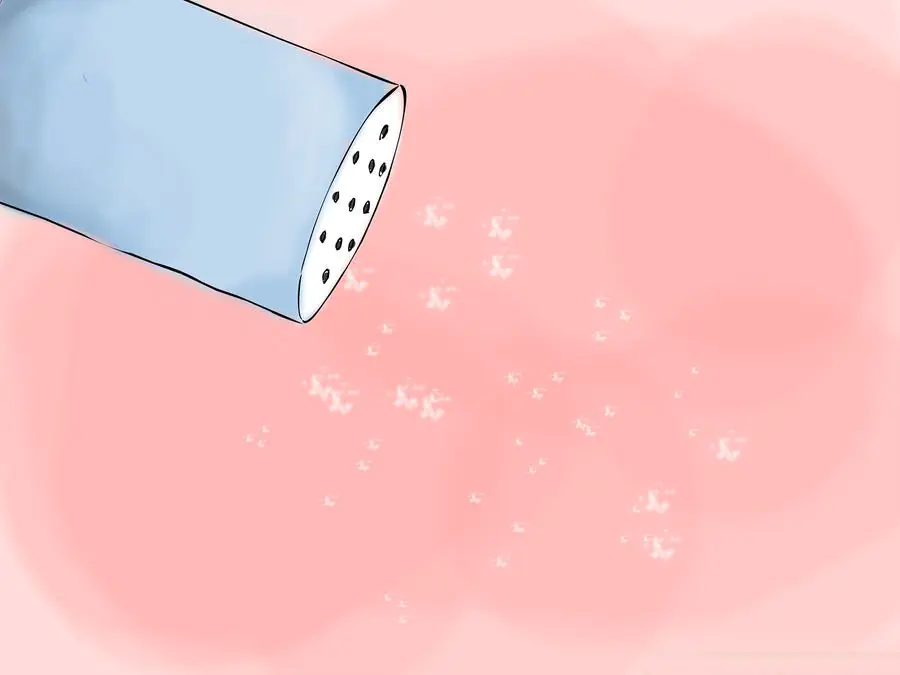
4. Dust your breasts with powder.
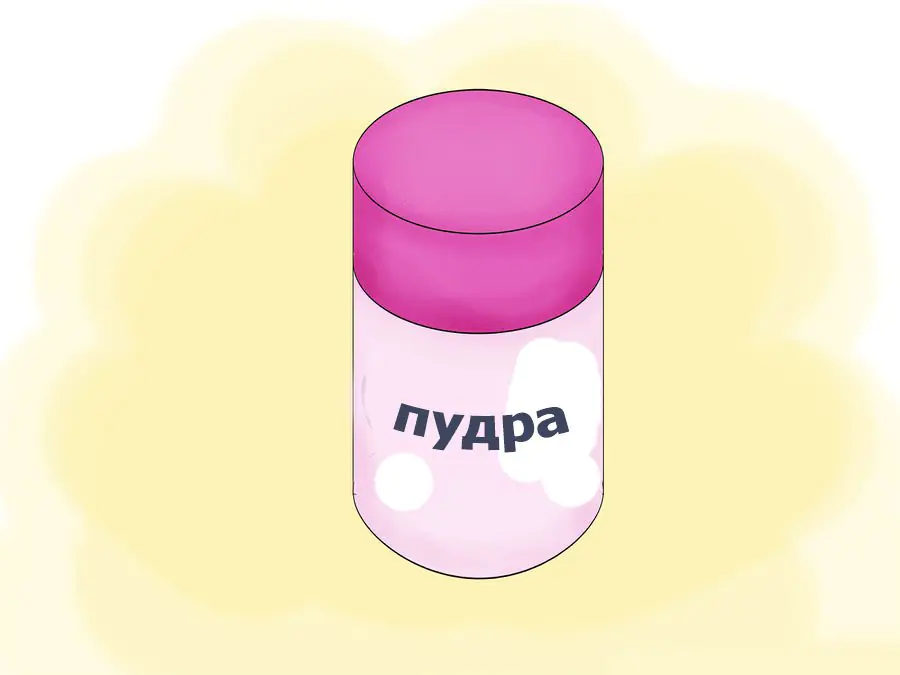
5. Try lotion if you don't want to wear makeup.
Hormonal changes in the body may not be felt by a person, but they stimulate the activity of the sebaceous glands in the skin. All this leads to clogging of the pores with an oily substance and the growth of bacteria. There are many more reasons why acne appears on the chest. Skin irritation is caused by pollutants in the environment, medications, and tight clothing. Rashes often signal serious problems with nutrition and hygiene.
Pimples on chest? There are various reasons
The appearance of inflamed papules and pustules depends on many conditions. Often, sebaceous cysts appear under the skin - reddish blisters containing fluid or pus. This is an extremely common aesthetic problem; in addition, acne causes pain and can leave scars.
More than 80% of cases of acne development are associated with internal causes - hormonal changes, heredity, poor immunity.
Small rashes, large painful blisters and cysts on the chest appear in people of different ages, but more often they occur during puberty. It depends on the excess of steroid hormones causing abnormal sebum secretion. It is very important to understand what contributes to negative processes and what helps prevent and treat inflammation.
Pimples appear on the chest for a variety of reasons.
unhealthy diet with excess caffeine, sugar, soy products predominates;
stress increases the level of cortisol in the skin - the causes of acne;
excessive sweating occurs, toxins come out through the pores;
the modern rhythm of life leads to a lack of sleep and rest;
skin reacts to climate and seasonal changes;
underwear, items of clothing, and jewelry injure the skin.
How to prevent the appearance of acne and pimples on the chest?
It is recommended to wear things made from natural fabrics that allow air to circulate freely. This is one of the general rules, there are at least 5 of them:
Regularly cleanse your skin with shower gel with a neutral pH.
Once a week it is necessary to change pillowcases, bed linen and towels, and wash everything at high temperatures (90°C).
Disinfect gold and silver chains with alcohol, rinse the beads so that the jewelry does not become a breeding ground for bacteria.
Choose perfumes and cosmetics without comedogenic ingredients that clog skin pores.
Reduce the risk of acne on the chest by using a mixture of rose water and lemon juice, and using an antibacterial body cream.
On a note! Personal hygiene is an important element in getting rid of acne and blackheads. The skin on the chest should be thoroughly cleaned using wet wipes and clean sponges.
A healthy lifestyle and a diet rich in vitamins and minerals are also important for preventing skin rashes. A large amount of fruits and green leafy vegetables in the diet goes well with an increase in the proportion of vegetable oils (linseed, camelina, olive, sunflower). It is important to consume at least two liters of water daily to ensure that toxins are eliminated through the kidneys and not through the pores.
Useful tips to help get rid of acne on the chest
Scrubs
Once a week, it is recommended to cleanse the skin of excess sebum and dead cells using a scrub. Small granules in a store-bought or homemade product exfoliate and degrease the skin. Small pimples under the skin disappear without reaching a state where inflammation of the sebaceous gland occurs.
Masks
Masks based on green clay, which is extremely effective for treating acne and pimples, are of great benefit. This procedure is especially suitable for oily and combination skin types. Other masks used to treat chest acne include egg white and lemon or apple cider vinegar, turmeric powder and honey. You can use these products 2-3 times a week. Other natural substances that can clear the skin of acne: burdock root decoction, lavender oil, sea buckthorn, avocado.
In practice, aspirin is often used. The easiest way is to crush the tablets, mix the powder with water and apply to the pimples. They also add honey and aloe juice to the resulting slurry. The exposure time of the product is usually 15–25 minutes, after which the mask is washed off with plenty of warm water.
Medicines
Gels and ointments based on benzoyl peroxide, the antibiotic clindamycin, azelaic and salicylic acids are considered especially effective for treating acne. The use of medications allows you to reduce the size of a pimple in a short time, for example, per day. Often large sebaceous cysts have to be treated within 4-5 days. If there is no improvement, it is recommended to consult a dermatologist. If necessary, the specialist will prescribe antibiotics and retinoids for oral administration.
Amina Pirmanova / article author
Hello, dear readers. Pimples on the chest bother not only girls and boys during puberty. Unpleasant rashes appear in both children and adults. Today we will talk about the reasons for this phenomenon, how to get rid of them and what you should never do.
Pimple - who or what are you?

Pimples are pathological elements that differ from healthy skin in color, density, sometimes temperature, texture. Rashes appear more often on the face, but the chest and back are also susceptible to rashes. Its elements can be:
- small and large;
- single and multiple;
- fuse together to form a red, swollen area and do not fuse;
- itchy or sore.
Acne in everyday life means:
| Types of acne | Explanations |
|---|---|
| Nodules (papules) | Bandless elements passing without a trace |
| Acne | Acne |
| Furuncle | Large purulent element, painful, associated with inflammation of the hair follicle |
| Blisters, hives | Urticular allergic rashes |
| Pustules (pustules) | Elements containing pus and located superficially or in deep layers of the skin |
| Bubbles | Hollow formations filled with transparent or bloody contents, up to half a centimeter in diameter |
| Nodes | Deep infiltrates healing with scar |
Of course, these are not all possible elements of a rash. But it is precisely to them that the definition of “pimple” can be applied. Most often, pimples are understood as mosquito bites, pustules (rashes with a white purulent head) and boils.
Certain types of rash appear on different layers of the skin.
- Blisters and nodules “live” intraepidermally or in the upper layer of the skin (epidermis).
- Blisters form subepidermally (under the epidermis).
- Nodules appear dermally (in the middle layer of the skin).
- Large nodes are located deep in the dermis and lower layer of skin (hypodermis).
Subcutaneous pimples (nodes) are painful. These are quite large infiltrates 2-10 cm in diameter, healing with a scar.
Most often, pimples are red with or without purulent, bloody or ichorous contents. The pimple hurts or itches. Wen or milia (millet) are classified into a separate group. This is a white pimple, similar to a millet grain, painless, located subcutaneously.
Typically, such subcutaneous “millet grains” appear on the face (in the eye area, on the forehead, cheeks). Less commonly, they are found between the mammary glands or in the upper quadrant of the bust.
Do you want to know why wen appear? There are many reasons for this. Both red and white “grains” appear on the skin as a result of disruption of the body. Let's look at the reasons in more detail.
Causes of rashes in the bust area
Rashes appear for a variety of reasons.
| Cause of the rash | Explanations |
|---|---|
| Violation of hygiene rules | Uncleanliness or illiterate selection of skin care products |
| Industrial hazards | Dust, gas contamination, humidity, high temperature |
| Overheating | At the same time, sweat and sebum are released, mixing with dust. A plug forms, closing the pore, and bacteria multiply underneath it, causing inflammation. |
| Allergies, autoimmune reactions | With food allergies, rashes appear more often on the back and bikini area, but pimples can appear on the chest and back. When the body reacts to its own digestive juices, raised elements appear in the sternum area, which merge and itch very much. It is not uncommon to be allergic to the powders you use to wash clothes and synthetic underwear. |
| Bites from mosquitoes, fleas and other insects | Flea bites are isolated small, itchy rashes. Mosquito bites are bumps that, due to an allergy, turn into large elements and are very itchy. |
| In women, a rash on the face and chest sometimes accompanies menstruation, pregnancy, lactation and menopause (these can be pustules, acne or wen). Teenagers get rashes during puberty | Hormonal disturbances and PMS contribute to the appearance of single elements. |
| Reduced resistance (ability to resist infection) of the skin. And the death of skin bacteria that constitute the natural defense of the human membrane | The microflora dies due to hyper-care: frequent use of peelings that disrupt the structure of the upper layer of skin, and the use of antibacterial soap. |
| Prickly heat | Elements appear under the breasts due to skin irritation later. Usually in hot weather for plump ladies with large busts. |
| Impact of stressors | Causes disruption of the hormonal and digestive systems. As a result, pimples appear. |
| Bacterial infections of ENT organs, carious teeth | Microorganisms that parasitize the human oral cavity produce waste products that we swallow. “Swallowing an infection” can cause disruption of the gastrointestinal tract and allergies to metabolites of bacterial toxins. |
| Skin diseases | Dermatitis, mycoses, parasitic diseases (Demodex). The mite most often parasitizes the skin of the face. But it can “crawl” onto the bust. The penetration of microbes into the gland through the milky pores and wounds on the nipple can lead to rashes on the skin of the nipple and areola. |
| Unhealthy diet (both red and white pimples appear), certain medications | Abuse of beer (phytoestrogens) and sweets stimulates the proliferation of opportunistic bacteria on the skin. Fast food causes disruption of the digestive system and the appearance of rashes. |
| Abuse of hormonal contraceptives, women's diseases | Hormonal imbalance leads to rashes |
Attention: the main reason for the appearance of a rash in the bust area is endocrine diseases. Single rashes that appear on the skin of the bust 1-2 times in a lifetime are not a sign of illness. If there are constant rashes that are localized (located) in the same place, you should consult a doctor.
What to do and not to do with acne?
If there are a lot of pimples, you will probably be embarrassed to expose your décolleté in the summer. And instead of tight tops, you will have to wear loose cotton blouses. This is one of the stages in the fight against rashes.
Under no circumstances should you squeeze out pimples yourself. If you squeeze out pustules, there is a risk of spreading the infection. If there are boils or acne, squeezing will not only cause pus to infiltrate into the surrounding tissues, but also cause the wound to heal with an unsightly scar.
If you want to clear your face of acne, go to a beauty salon and improve the functioning of your digestive system and the production of hormones.
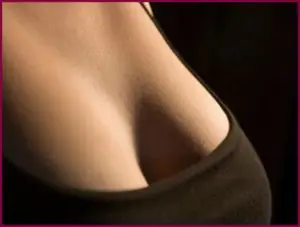
If you have one “painful” pimple with a white “head”, treat it with a local disinfectant (Chlorhexidine, Miramistin, Iodine). If you have a lot of pimples, consult a doctor. He will tell you how to get rid of the rash. Treatment will depend on the cause of the disease:
- For allergies, local and general antihistamines (Loratadine, Suprastin, Fenistil ointment), local hormonal drugs (Celestoderm), sorbents and intestinal probiotics are prescribed. A diet excluding allergenic foods (chocolate, strawberries, honey, tomatoes, nuts) is required.
- If the functioning of internal organs is disrupted, hepatoprotectors, probiotics, agents that correct the acidity of gastric juice, enzymes that support the functioning of the pancreas, and prebiotics (agents that restore the functioning of intestinal microflora) are prescribed.
- When exposed to stressors, a hypoallergenic diet, sedatives, and medications to normalize sleep are prescribed.
- In case of hormonal imbalances, the hormone levels in the blood are adjusted.
- In case of acne development, local antibacterial drugs (Erythromycin, Clindamycin), keratolytics (Benzoyl peroxide), retinoids or vitamin A analogues (Tretinoin) are prescribed.
Any treatment must be prescribed by a doctor and include a set of general measures (hygiene, nutrition, sports) and specific therapy. Self-medication is fraught with the transition of the condition to a chronic form and unpleasant complications.
With this we say goodbye to you. We hope that we have helped you understand the main reasons for the appearance of unsightly elements in the décolleté area, and you will share the article with your friends via social networks.



